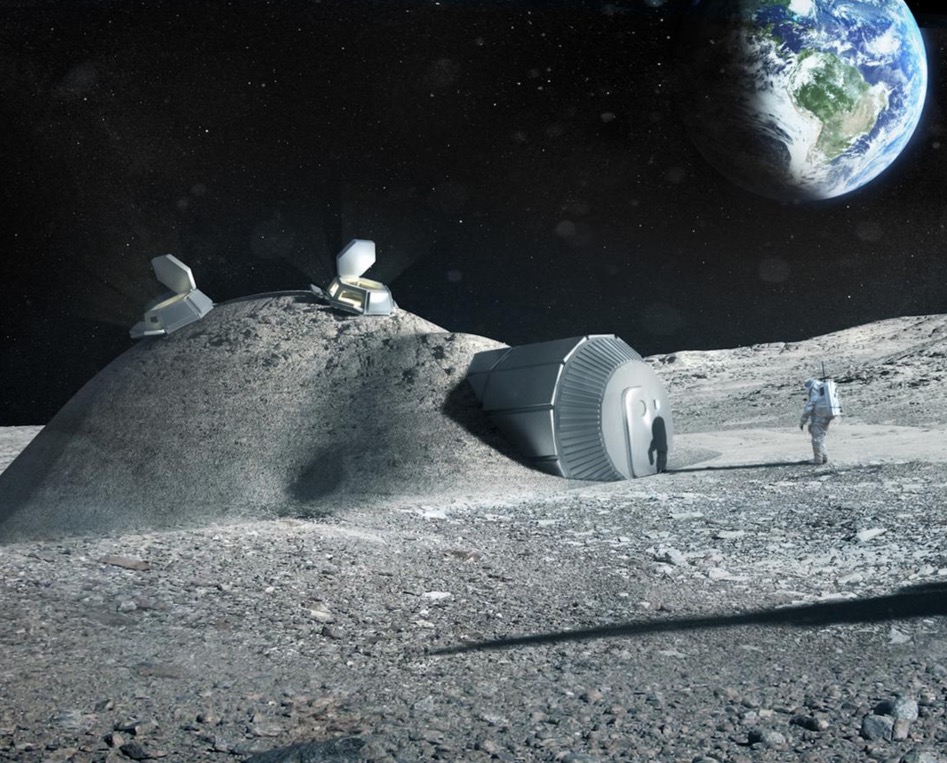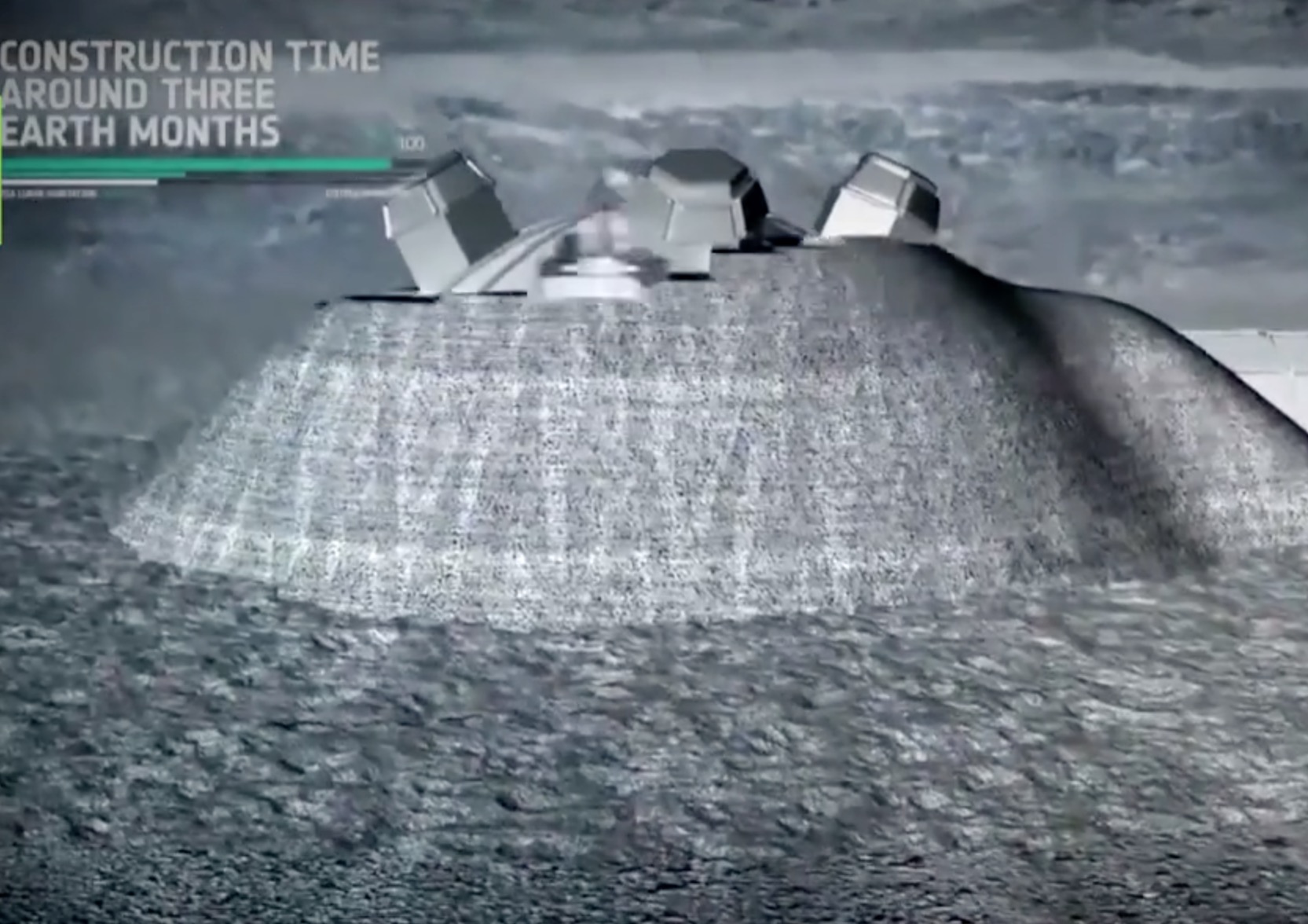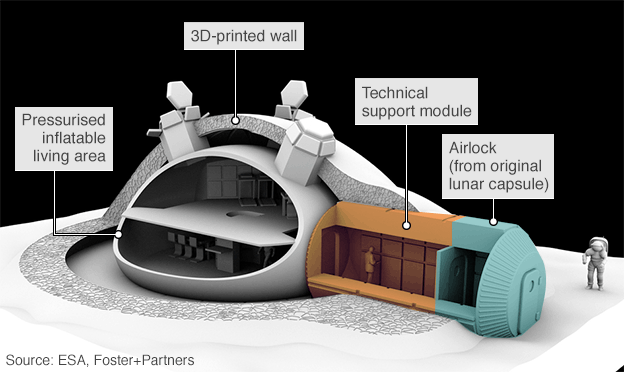
A proposal from Russia and EU to build a lunar base at the south pole of our moon suggests heavy use of 3D printing. But is this really required?
The notion of placing a base at that location makes much sense: it is now known there are substantial deposits of water underground and hidden in permanently dark crevices. The water can be used not only for drinking and cooking, but also to be broken down into breathable oxygen and for use in fuel cells.
The proposal involves setting up a base as this diagram suggests. It includes some pre-built airlocks, but the majority of the building’s shell is to be 3D printed onsite, using nearby lunar soil. This video suggests that such construction would take around 90 days to complete.

In the video you can see simple bricks being printed and applied to the igloo-like structure.
But this is what is bugging me: bricks are not a suitable item for 3D printing. 3D printing is best used to create unique items, as opposed to a mass manufacturing technique to produce a lot of identical items.
Like bricks.

While it’s very possible an onsite 3D printer would be very useful, perhaps to produce other components for the base, I cannot imagine why you would want to expend the time and energy to 3D print bricks.
There may be vastly simpler methods of construction that should be considered instead. For example, why not just inflate a large balloon in the shape of the interior and spray the outside with a self-hardening foam? Shovel some soil on top and you would achieve about the same thing, without the effort, time and complexity of 3D printing.
My point is that just because something can be 3D printed, doesn’t mean it should be 3D printed. Always select the best process for a given situation.

